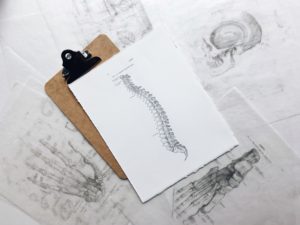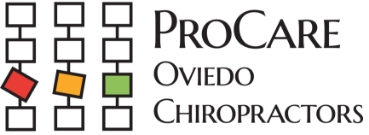Welcome back! This week’s article is going to share more terms often used during a visit to the chiropractor. If you are anything like us, you may feel more comfortable and less intimidated knowing what these terms mean. Plus, we are sharing information on the spine.
Motion segment:
Last week, we started off reviewing the term subluxation. Then, we moved onto the terms adjustment and manipulation. Today, let’s start off with the term motion segment.
Motion segment is a technical term used by medical professional such as chiropractors and surgeons. Motion segment refers to two adjacent vertebrae and the intervertebral disc located between the two vertebrae. This is the area which chiropractors examine and adjust.
The human spine:
 The human spine has twenty-six bones lengthwise. There are twenty-four vertebrae with cartilage in between. There are two other bones called the sacrum and the coccyx.
The human spine has twenty-six bones lengthwise. There are twenty-four vertebrae with cartilage in between. There are two other bones called the sacrum and the coccyx.
Before our bodies fully develop, we technically have more vertebrae than adults. As children we have thirty-three instead of the mature number of twenty-four. This is because the sacrum’s five bones have not fused together quite yet- not until adolescence.
For those that do not know, adolescence is the phase between childhood and adulthood. Age wise, this is about from ages ten to nineteen. Adolescence is broken down into three stages in which physical, intellectual, social and emotional development takes place.
Our vertebrae are named by the first letter of their region. The three regions are cervical, thoracic, and lumbar. They are also labeled with a number to indicate their position along the superior-inferior axis.
Parts of vertebrae in detail:
For example, the most inferior lumbar is called L5. It is located under the fourth lumbar vertebra. Each vertebra has multiple important parts:
- the body
- vertebral foramen
- spinous process
- transverse process
 The body is the main weight bearing region of the vertebra. It also makes up most of the bone’s mass. Extending from the body is the transverse process. They are thin columns of bone that point out to the left and right sides of the body.
The body is the main weight bearing region of the vertebra. It also makes up most of the bone’s mass. Extending from the body is the transverse process. They are thin columns of bone that point out to the left and right sides of the body.
Next, the spinous process extends from the ends of the transverse process in the posterior direction. Lastly, between the spinous process and transverse process, is the hollow space that contains the spinal cord and meninges called the vertebral foramen.
Now, that was all the parts of each vertebra. Moving on, between the vertebrae of the spine are thin regions of cartilage. These regions of cartilage are called intervertebral discs. These discs are made of an outer shell with a soft, pulpy region in the middle.
That shell is called the annulus fibrosus. It is made of tough fibrocartilage. The shell, or the annulus fibrosus, binds the vertebrae together but is flexible enough to go with our flow and movements.
The soft region inside the shell is called the nucleus pulposus. The nucleus pulposus acts as a shock absorber to support the body’s weight. It prevents the vertebrae from crashing into each other while under strain- which would be incredibly painful.
 The vertebrae of the spine align so their vertebral canals form a hollow, bony tube according to Tim Barclay, PhD. This tube protects the spinal cord from external damage and infection. The intervertebral canals are the space between the vertebrae.
The vertebrae of the spine align so their vertebral canals form a hollow, bony tube according to Tim Barclay, PhD. This tube protects the spinal cord from external damage and infection. The intervertebral canals are the space between the vertebrae.
The intervertebral canals allow the spinal nerves to exit the spinal cord and connect to multiple regions of the body. In our next article, we are gong to share more details of the five major regions of the spine. We hope you enjoyed Part One of the spine’s anatomy series.
Align your spine:
Make an appointment today if you feel your back is off but have not suffered any major trauma. If you have suffered trauma, still make an appointment, but be sure to mention this when scheduling an appointment.
See you next time! Have a great Thanksgiving, and be safe out on the roads.
Staff Writer



